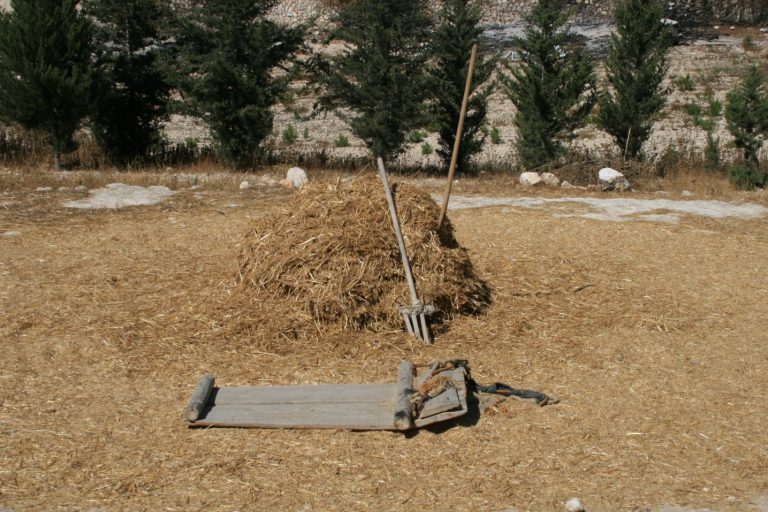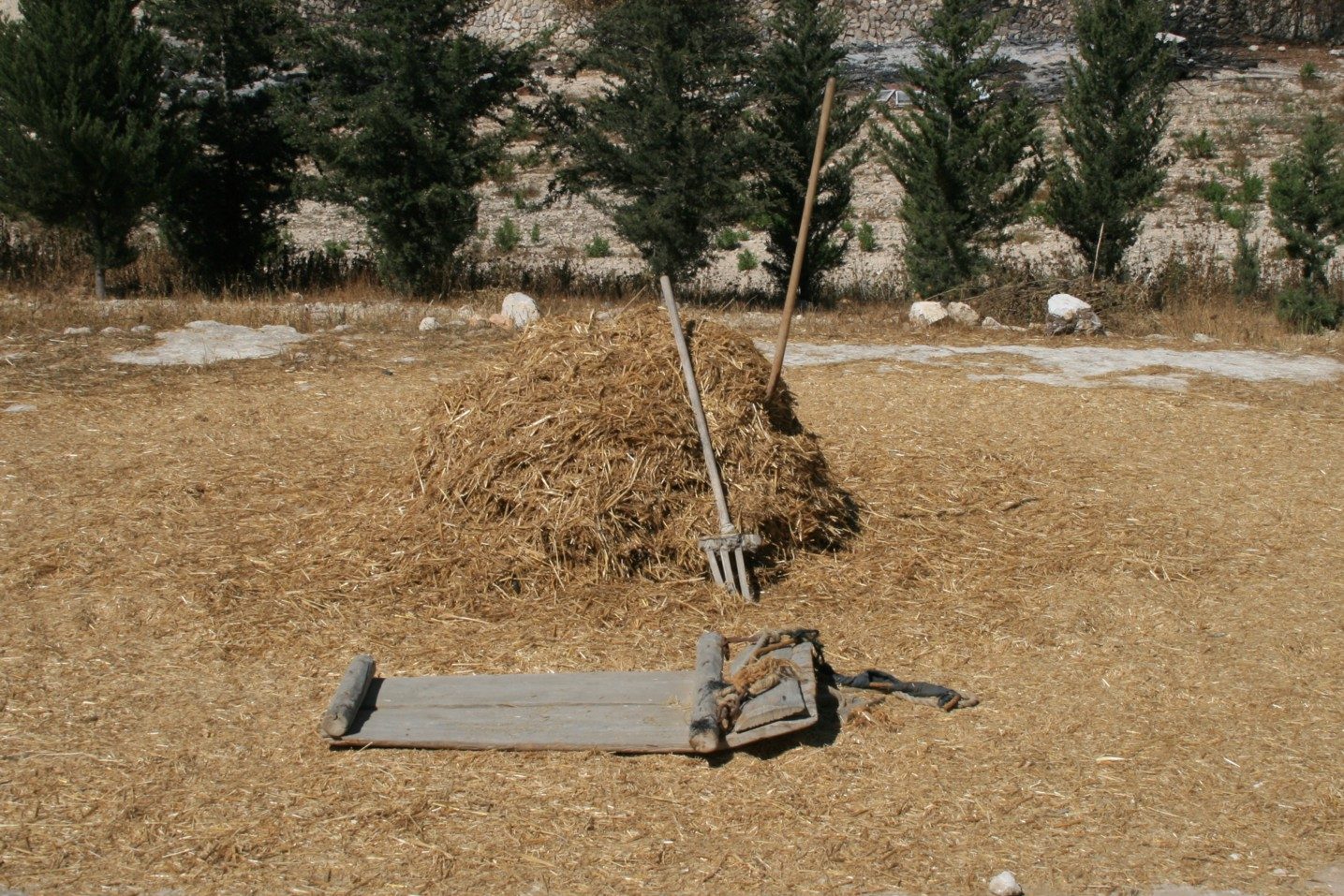Dosh (threshing) is the fifth of the 11 agricultural melachot. It involves removing something edible from its natural casing. Prototypical dosh involves the removal of grain kernels from their stalks. In pre-industrial days, this might have been accomplished by having oxen tread on the grain, but it can also be accomplished by hand. Extracting any fruit from certain types of inedible peels is a derivative labor (toldah) of dosh.
 Dosh applies to things that ultimately draw their nourishment from the earth but not exclusively plants. For example, milking an animal – or even a nursing mother expressing milk – is prohibited as derivatives of dosh. (If a nursing mother must express milk in order to alleviate pain, she may not collect the milk for later use.)
Dosh applies to things that ultimately draw their nourishment from the earth but not exclusively plants. For example, milking an animal – or even a nursing mother expressing milk – is prohibited as derivatives of dosh. (If a nursing mother must express milk in order to alleviate pain, she may not collect the milk for later use.)
Dosh does not apply to all types of peels, only to more external shells that are typically removed well in advance of eating. A banana or an orange has a snug peel that typically remains on the fruit until it is eaten. Even peeling vegetables on Shabbos is permitted (although a vegetable peeler is muktza). But removing peas from inedible pods is dosh because the pod is not snug and is typically removed well in advance of eating. (Snow peas are another story, since the pods are edible.) Shucking an ear of corn is likewise the melacha of dosh.
One particularly applicable derivative of dosh is called s’chitah. S’chitah involves squeezing or wringing something out in order to extract a liquid. A lemon may not be squeezed into a cup of tea on Shabbos because of s’chitah. It may, however, be squeezed onto another solid food item that will readily absorb the juice. Therefore, one may squeeze lemon onto fish or onto sugar; the sugar may then be stirred into one’s tea.
This is just an introduction to the concepts of the melacha of dosh; it is not a substitute for a full study of the halachot.
